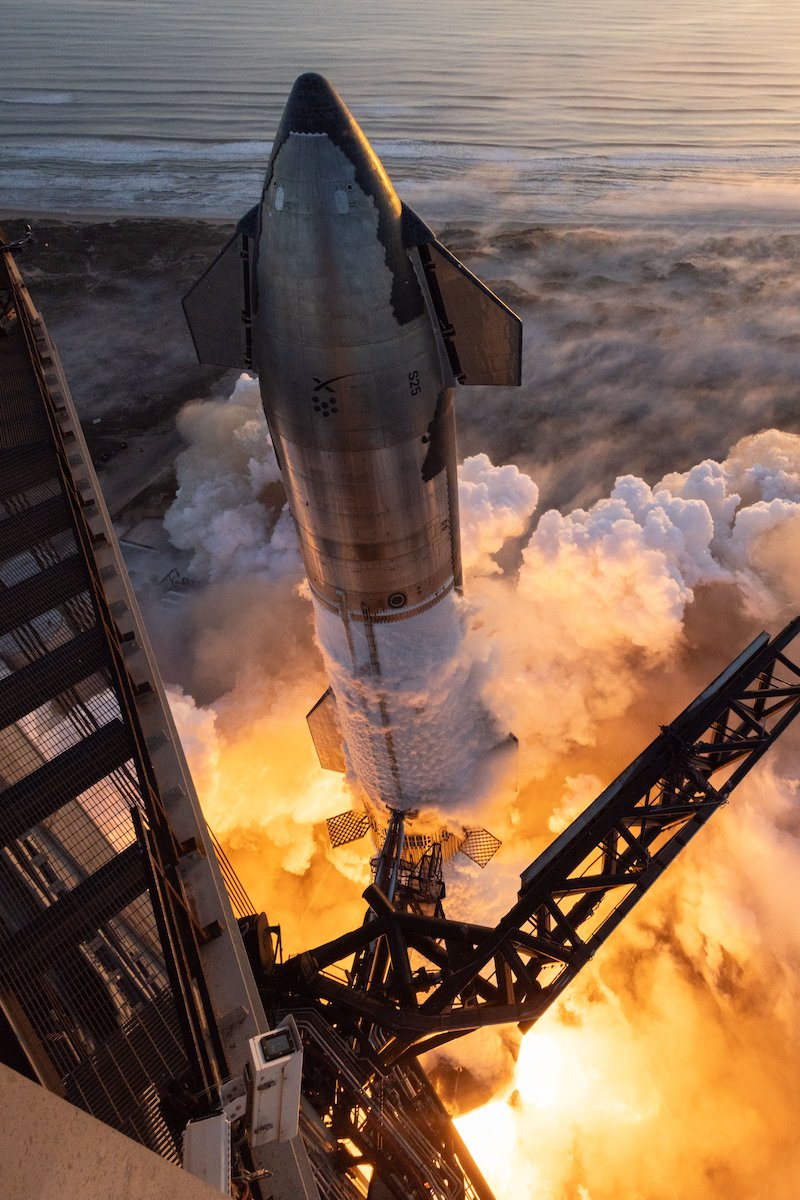Three months after preliminary launch of the Starship launch vehicleThe US Federal Aviation Administration (FAA) has completed an investigation into the incident, which resulted in the loss of a launch vehicle and upper stage in the final phase of flight.
SpaceX has identified and the FAA has accepted the root causes and 17 corrective actions documented in SpaceX’s incident report. Prior to the next launch, SpaceX must complete all corrective actions and obtain a license modification from the FAA that addresses all safety, environmental and other applicable regulatory requirements.
— The federal agency said in a statement.
SpaceX still needs to submit additional information to the FAA about its responsibility for the safety of people and property on the ground before the agency finalizes its application to launch Starship for the third time. The likely timeline for completing the regulatory process is early to mid-March, transmits ArsTechnica.
What went wrong
SpaceX noted that the first stage of the Super Heavy rocket performed nominally, with all 33 Raptor engines igniting successfully. The launch vehicle then completed a full combustion cycle to achieve stage separation. At that point, the upper stage performed a «hot withdrawal» maneuver, during which the Starship stage separated from the booster while some of the booster’s engines were still running.
The next step for the Super Heavy was to perform a series of ignitions to make a soft landing in the Gulf of Mexico. During the first test, 13 rocket engines were supposed to work. But several engines began to shut down before one engine failed, quickly leading to a rapid, unplanned destruction of the launch vehicle
The problem was later linked to a problem with the liquid oxygen supply to the Raptor engines. The most likely root cause of the RUD (Rapid Unscheduled Disassembly) failure of the accelerator was determined to be a blockage of the filter through which liquid oxygen is supplied to the engines, which led to a loss of inlet pressure in the engine oxidizer turbo pumps, and eventually led to the failure of one of the engines, resulting in the loss of the ship.
Starship ventilation openings
The vehicle was supposed to fly almost two-thirds of the way around the Earth before crashing near the Hawaiian Islands. However, about seven minutes after takeoff, a large release of liquid oxygen occurred. According to SpaceX, the ship had excess liquid oxygen to collect data needed for future payload deployment missions. It had to be released before the Starship crashed.
A leak in the aft part of the spacecraft, which occurred during the launch of liquid oxygen ventilation, led to combustion and subsequent fires, which resulted in the loss of communication between the spacecraft’s onboard computers and the command shutdown of all six engines before the burning on ascent was completed, after which the autonomous flight safety system detected a violation of flight rules and activated the flight termination system, which led to the disintegration of the spacecraft.
— the company said
By then, the vehicle had reached an altitude of 150 km and reached a speed of about 24,000 km/h. This is slightly less than the orbital speed of 28,000 km/h.
In a statement, SpaceX said it is making changes to the Super Heavy and Starship stages to address these issues. The company also aims to improve the overall performance of the Starship by adding a new electronic thrust vector control system for the Raptor engines of the Starship’s upper stage and a system for faster pre-launch fuel loading.
SpaceX has four Starships in the final or near-final stages of construction. If the next flight goes smoothly, the company may start launching the world’s largest rocket more often.


Spelling error report
The following text will be sent to our editors: